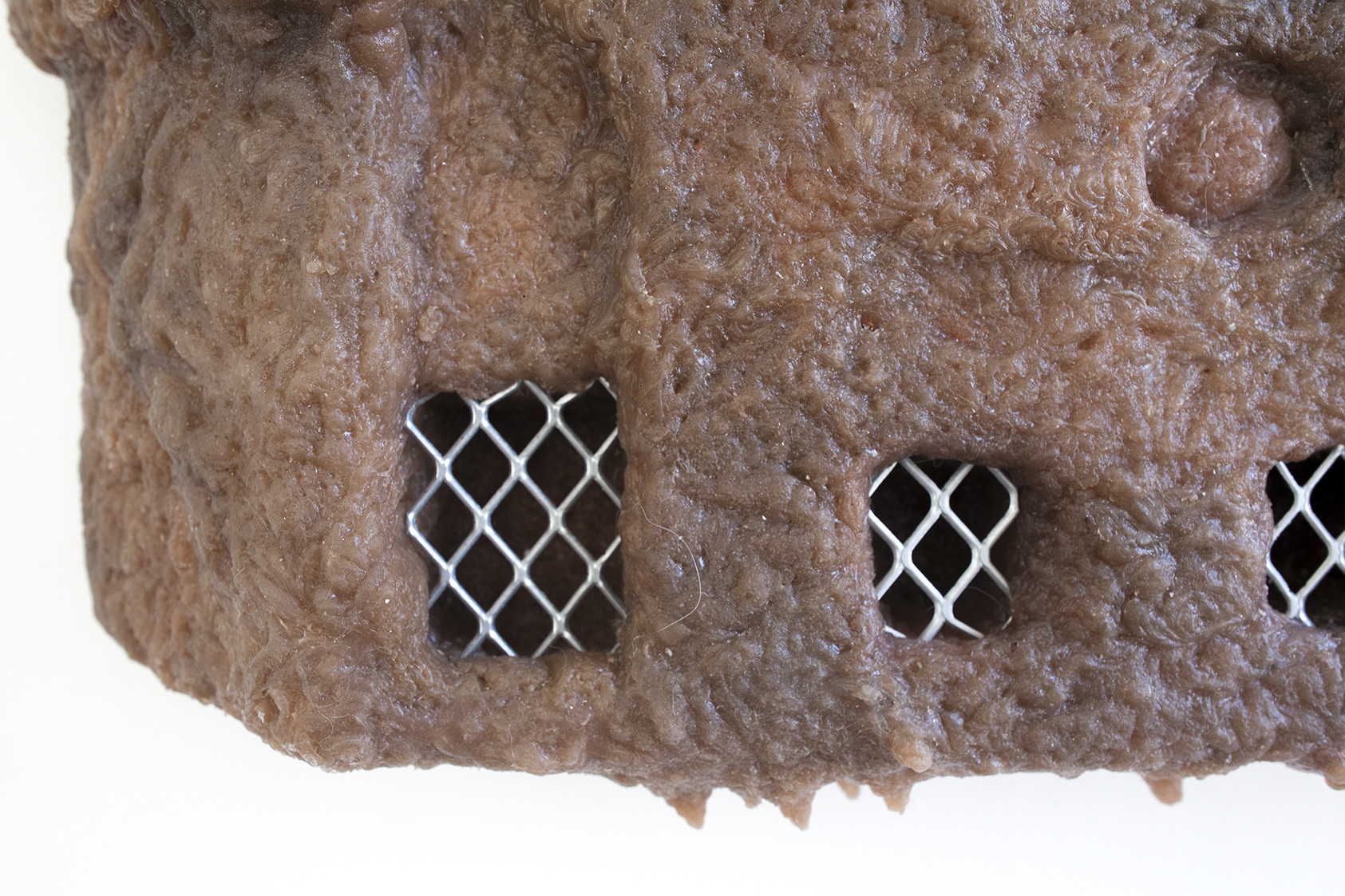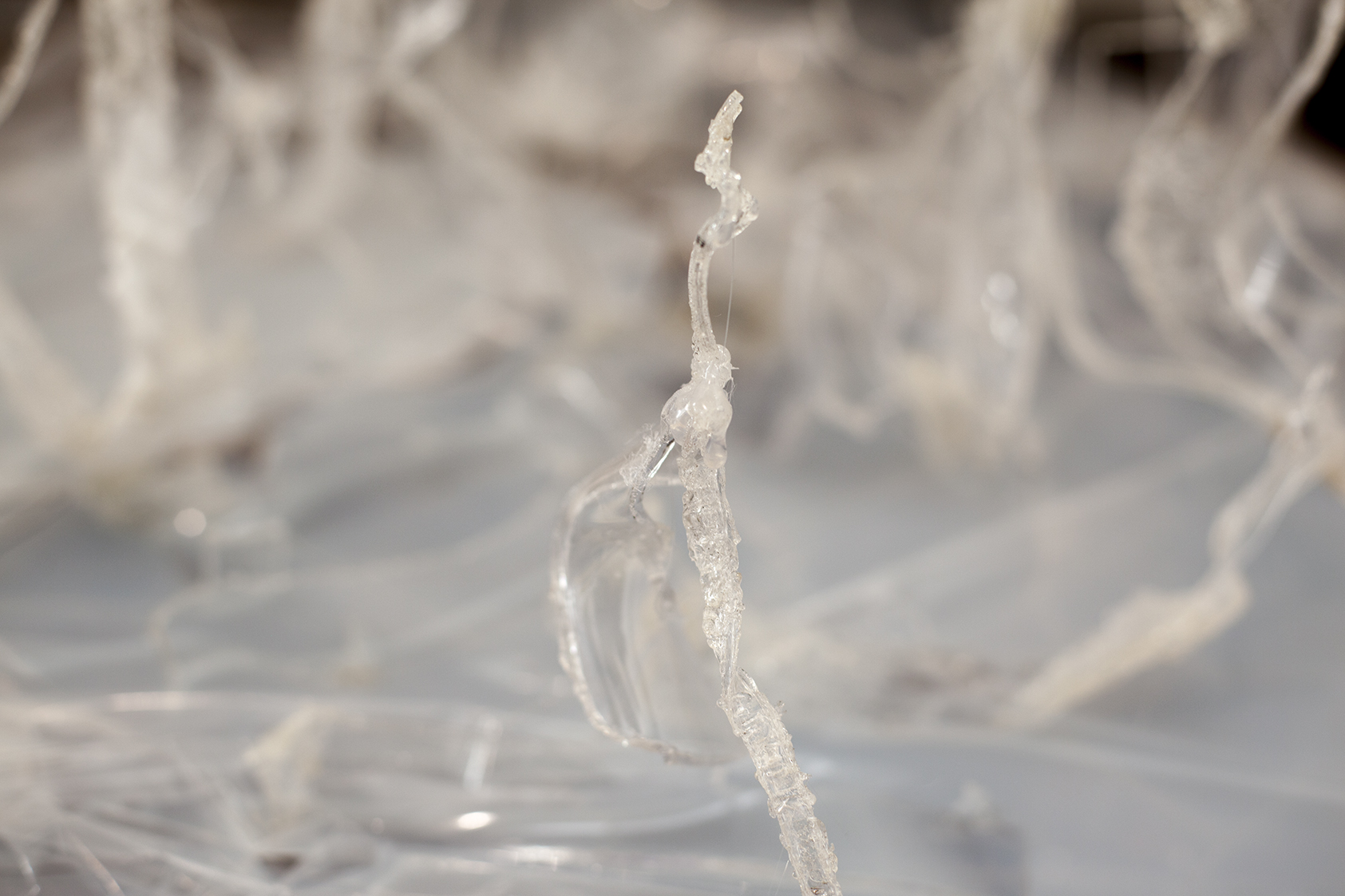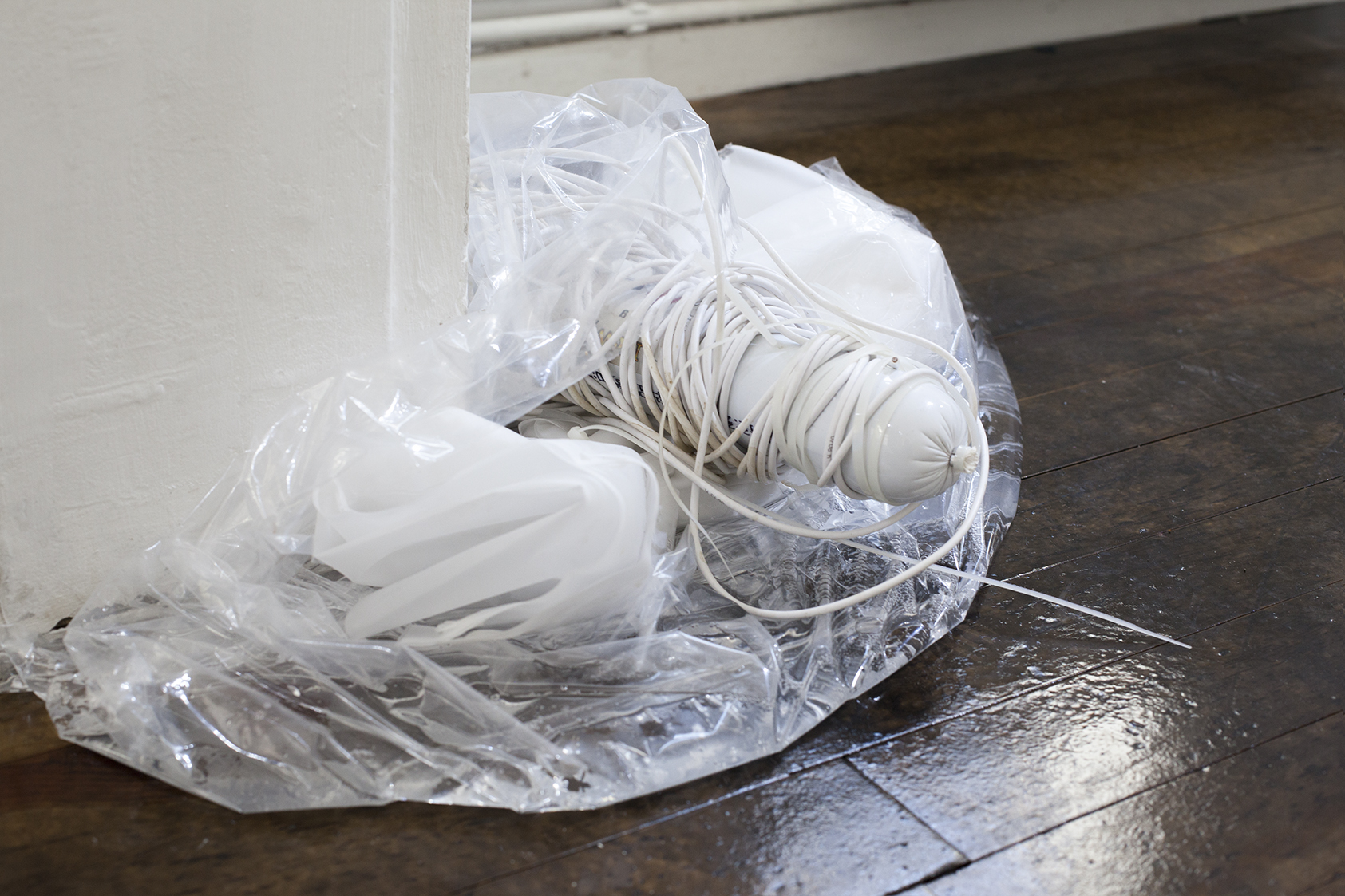“IT’S NOT JUST ABOUT DYING” An Interview with Monia Ben Hamouda and Michele Gabriele
“IT’S NOT JUST ABOUT DYING”
An Interview with Monia Ben Hamouda and Michele Gabriele
By Fulya Baran @fulyabrn @turkiyedecagdassanat
OJ, which opened its doors in December 2016 with Burkut Kum’s first solo exhibition in Istanbul, is a fresh multi-disciplinary artist community and also a physical studio / exhibition space located in Sehbender Sokak, Istanbul.
Between May 24 and June 10, OJ hosted the first duo exhibition of two young Italian artists, Monia Ben Hamouda and Michele Gabriele, entitled “It won't only kill you, it will hurt the whole time you're dying". Monia Ben Hamouda and Michele Gabriele are both artists based in Milan,IT. We came together with the artists to talk more about themselves and their upcoming show in OJ.
Can you please tell us about yourself? Your background and previous projects? And how did you decide to come together with this exhibition?
Monia: I was born in Milan in 1991. My father is from Tunisia and my mother is Italian, and I now work between Milan, Helsinki and Tunisi. Being born into these two different cultures has always been important to me because i’m very interested in geographical identity within my research.
I’ve completed my BA at the Academy of Fine Arts in Milan, and I also had my first solo show entitled “Miranda” curated by PANE Project two months ago in Milan. PANE is a Milan-based Art Project, founded and run by Lucia Leuci, which has put out some very interesting shows in the recent past. The latest group show I exhibited in was “H O P E”, curated by New Scenario in Dresden DE, which is an online project that creates a dynamic platform for conceptual, time based and performative exhibition formats.
Michele: I was born in 1983, in the south of Italy very close to Naples where my family comes from. I’ve studied in Academy of Fine Arts in Milan. My previous project before this show was in the beginning of 2017, entitled “You would like that we were not here. But we are too emotionally absorbed by the homesickness of places that we’ll see only from the windows of our Bentleys” and it was a group show curated by myself. Monia also participated in this group exhibition and that’s actually how we met each other. We’d met just before the show and realized that we were both interested in this same idea of keeping the documentation as part of the process and the documentation itself became one of the most important aspects of our show. I was actually considering myself quite alone in this approach, however seeing Monia also worked this way, we decided to join forces.
Monia: I had studied photography and graphic design in high school, so the whole documentation process has been important for me since then. And in this group show curated by Michele, we decided to produce the whole documentation by ourselves and integrate this process with the work as a part of our practice. I can say I acted like kind of a co-curator for “...Bentleys” as I was involved in every part of it, so I feel very intimately attached to the whole process of putting out the show. This also set off the beginning of me and Michele’s working together in a strong way. Later on in my solo show with Pane Project, I actually used one of Michele’s works as a ‘medium’ for a piece I made.
Michele: It wasn’t a piece that we’ve made together but it was more like my work had been eaten by hers, as it was inside her sculpture. We are also sharing her studio together at the moment. So we can say that we were already familiar with each other’s practice and it was the next natural step to work on a duo exhibition together, contributing to every single aspect of the work together from the beginning to the end.
Monia: But of course, each our practices are very different from each other, and this creates a very personal yet collaborative result in the end.
And what is the story of meeting OJ?
Monia: Well, it’s an interesting story. When me and Michele started to share a studio in Milan, Burkut Kum (He is an artist based in Istanbul and London, also a co-founder of OJ) just had his first solo in Istanbul curated by OJ, which I really liked. I’ve started to talk to Michele about his show and he agreed with me on how interesting this project was.
Michele: We found his show and the space itself very unique, and we started to follow each other on Instagram and Facebook to get in contact.
Monia: OJ already knew Michele’s works, and they had also seen mine. During this time, I was in the beginning of the production process for Miranda, and OJ messaged me on Instagram saying they love my work which got me very excited because I really liked OJ’s way of working as a project. So after several emails, we proposed them to have a duo exhibition with Michele. For us, it’s really important to have an exhibition in Istanbul because of its importance in the contemporary art scene and within the bigger geopolitical picture.
How did you choose the title "It won't only kill you, it will hurt the whole time you're dying"?
Monia: We were trying to consider the way how movies use ‘accidents’ to create a turning point in the narrative storyline, no matter how banal or catastrophic this can be done. For example, a tornado destroying a whole city, share the same narrative value with a teenage girl angrily leaving her parents’ home, taking their car and crashing it. These two events have the same importance even if they can be from two completely different stories/films. In addition, the way how the audience is prepared to the discovery of a traumatic event, accident or catastrophe is built through a precise scenario: the protagonist runs towards the epicentre of the accident instead of running away from it, gradually building tension and eventually revealing to the audience the final climax. It’s always about the preparation for the ‘bigger picture’.
Michele: Actually, this happens in all sorts of movies, but it’s mostly apparent in apocalyptic scenarios, especially big-budget American blockbusters. The title states that the dying is not the only thing, it is just a turning point for the narrative. So it also includes a moment in itself.
Monia: Yes. It suggests us that the important thing is the timeline and the mechanics of how these events come into action.
So it’s not a citation, it’s a sentence that you’ve built up?
Michele: It was a fake high voltage sign board, that we’ve seen on the internet, to warn people against the danger of high voltage. It was an exaggeration. We’ve changed the wording a little bit, and then decided to take it as our title . We thought it was very close to our feeling of the show. Also, we like the way it sounds, as it has phonetical rhythm to it.
Do you find those kind of movies poetic or banal?
Monia: I can say that it’s a cliche.
Michele: These movies are based around a stereotype, an archetype almost.. However, we are not asking ourselves if it’s banal or not. We don’t see ourselves in the position to judge this. We just find it inspirational.
Monia: Yes. It’s inspiring and also familiar to almost everybody. That’s why we decided to take it as a starting point for this exhibition.
There is a short trailer for the exhibition accompanied with some very nice music, which can be seen on OJ’s website and (http://www.ojwwep.com/) and the social media links. Why did you create a video to tell about the exhibition and choose that music?
Michele: The reason behind creating an actual trailer for the exhibition was the fact that our inspiration for the show had come from movies.
Monia: The music was spontaneous actually. We were listening to a lot of Bossa Nova in the studio at the time, so we can say that this music played a role whilst we were shaping our works. Iit was natural to use it in the trailer.
What will the viewer see in the fiction of the exhibition?
Monia: Firstly, what is actually important is the sense of time. We set up the objects and works in the exhibition in a very cinematic feel. For instance, you will see broken glasss scattered around. It’s the building up of stimuli generating objects around the exhibition space, leading the audience to the climax.
So, there is a strong narration behind it.
Monia: Yes, exactly. You know how that movie will end, but the important thing is to walk the path. The sense of rhythmical‘building up’ and is the thing we’re more interested in.
Exhibition text (or maybe Press Release I should say) is beginning by this sentences:
" I'm so confused that I don't even know if you want me to hug you or you want me to die. Everyone is running away from that disaster, yet I cannot do it and I have to run to you. If I only have one chance, one, I have to try to save you. Or at least see if you are there. " Can we say it’s romantic in a way? Or what are you intending with beginning with this words?
Michele: It’s an excerpt from a poem that I wrote a couple of weeks ago during our work for this exhibition. I wouldn’t say it’s romantic but rather a piece of an intimate text.
Can you please give more technical details and conceptual framework of the artworks themselves?
Monia: We’ll have some sculptures that we’ve made together in a full collaborative effort, which is actually new for us.
Michele: Mostly, the show will include sculptures and installation of objects. Interestingly, some of the new work was actually made with the materials we collected/found in Istanbul.
I have three wall pieces which stand inbetween sculpture and painting, but most closely relate to sculpture. Most of my sculptures is an attempt for me to search for variations of form. For most of these sculptures I used various found containers as my starting point and built the work around them. I can say that the containers in this case start to contain themselves.
While I’m working on some of these new forms, I always ask myself how it will be seen in the documented picture after it’s finished and exhibited. So the documentation is very important for me, as I mentioned before. I’m less interested in the reality, but how these physical creations create a fictionalized reality. The reproduction of the actual experience of the show is more important than getting a simply comprehensive photograph.
Monia: I often use various liquids as my medium in my practice, and most of the works I display on this show are sculptures. These fluid materials don’t necessarily come as a technical or conceptual choice, but represent symbols in themselves. I’m interested in the power of some images, or rather in images that contain a loss of power, so every material is a symbol. For this reason there is democracy among my work’s materials.
There will also be a video work that was made in Lapland during the days of darkness. Also, here being in OJ, is also a kind of a residency for us. Because we are still in the process of working together for the production for our exhibition.
Lastly, some magazinish questions... Was that the first time in Turkey? Have you had chance to see any exhibitions around? What do you think about the Istanbul’s art scene? Are you interested to follow Turkey’s art scene?
Monia: That was the first time being in Istanbul for both of us. I think Istanbul is really interesting because it has certain colours and tones, which we find inspiring.
Michele: I always wanted to come to Istanbul. It was always a place to see for me. While I was in Academy 10 years ago, everybody was talking about Istanbul’s contemporary art scene. Now, many things has changed as I see and but it’s still very interesting. Everything is changing very fast and we never know where it will go.
Monia: OJ is also very nice showing us around… but we couldn’t have that much time to see around as we are still working very hard to meet to the opening.
Michele: We already knew Burkut Kum and Bora Akıncıturk’s work and we have been friends with Bora since a few years. I really like their work. I also like Emre Hüner’s works.
You can reach the documentation of the exhibiton: http://bit.ly/2s8twJJ
For more information about the artist:
Monia Ben Hamouda: http://moniabenhamouda.tumblr.com/
Michele Gabriele: http://michelegabriele.tumblr.com/



































